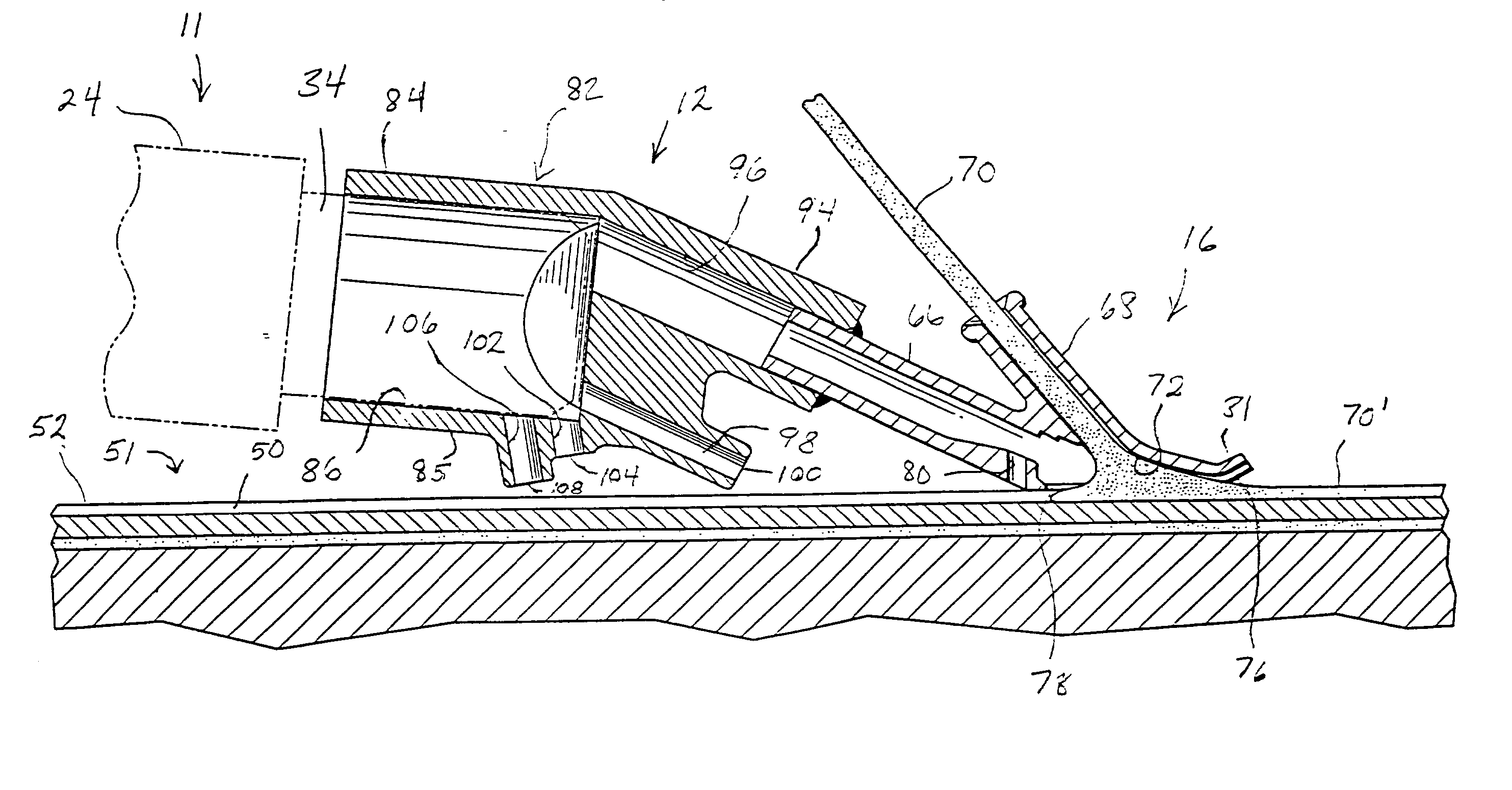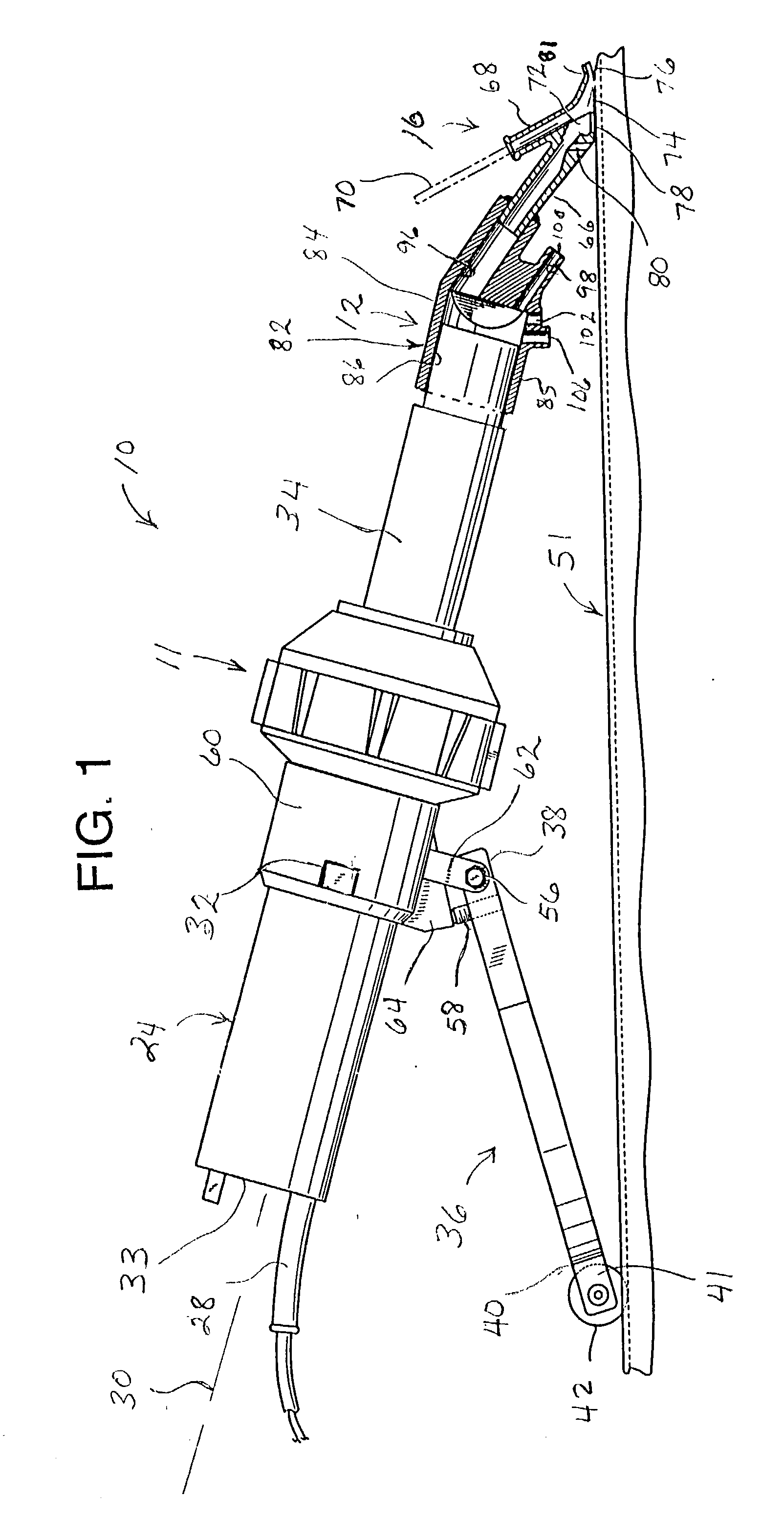Heat nozzle for welding floor seams
a technology of heating nozzle and floor seam, which is applied in the direction of furniture, paper hanging, lighting and heating apparatus, etc., can solve the problems of unsightly appearance, significant deterioration of the floor, and inadequate adhesive bond between the underside of the flooring sheet and the subfloor therebeneath
- Summary
- Abstract
- Description
- Claims
- Application Information
AI Technical Summary
Benefits of technology
Problems solved by technology
Method used
Image
Examples
Embodiment Construction
[0034] FIG. 1 depicts a device, indicated generally at 10, for sealing seams between adjoining, abutting sheets of flooring 52 and 54 on a flat floor surface 51. The seamsealing device 10 is comprised of a portable, handheld, seam-sealing welding gun 11 equipped with a heat nozzle 14 constructed according to the invention, and also a hollow heat welding tip 16. The heat welding gun 11 is a conventional, Leister Triac model portable, handheld floor seam welding gun. The generally cylindrical casing 24 of the seam welding gun 11 defines a longitudinal axis indicated at 30. The welding gun 11 is powered by commercially available, alternating current through a power supply cord 28. Near its front end the outer casing 24 of the heat welding gun 11 defines a pair of diametrically opposed, radially outwardly projecting lugs 32 having a rectangular configuration, as illustrated.
[0035] Heat is produced within the casing 24 by an electrical resistance heating element. A blower within the casi...
PUM
| Property | Measurement | Unit |
|---|---|---|
| Angle | aaaaa | aaaaa |
| Angle | aaaaa | aaaaa |
| Angle | aaaaa | aaaaa |
Abstract
Description
Claims
Application Information
 Login to View More
Login to View More - R&D
- Intellectual Property
- Life Sciences
- Materials
- Tech Scout
- Unparalleled Data Quality
- Higher Quality Content
- 60% Fewer Hallucinations
Browse by: Latest US Patents, China's latest patents, Technical Efficacy Thesaurus, Application Domain, Technology Topic, Popular Technical Reports.
© 2025 PatSnap. All rights reserved.Legal|Privacy policy|Modern Slavery Act Transparency Statement|Sitemap|About US| Contact US: help@patsnap.com



